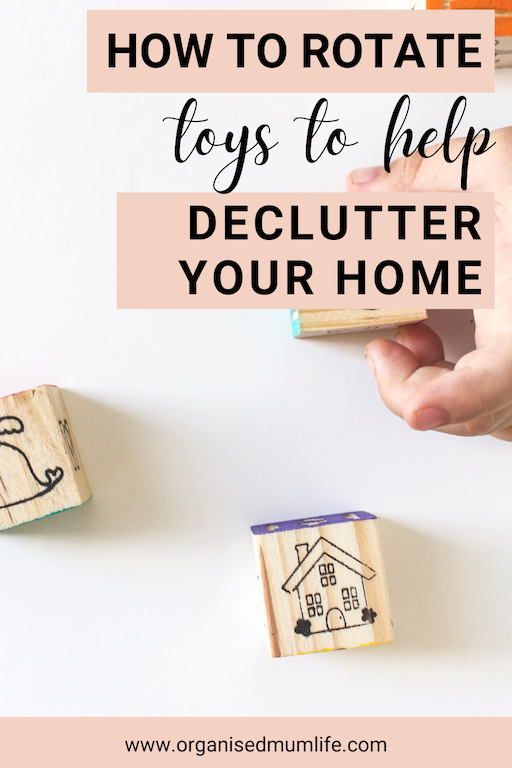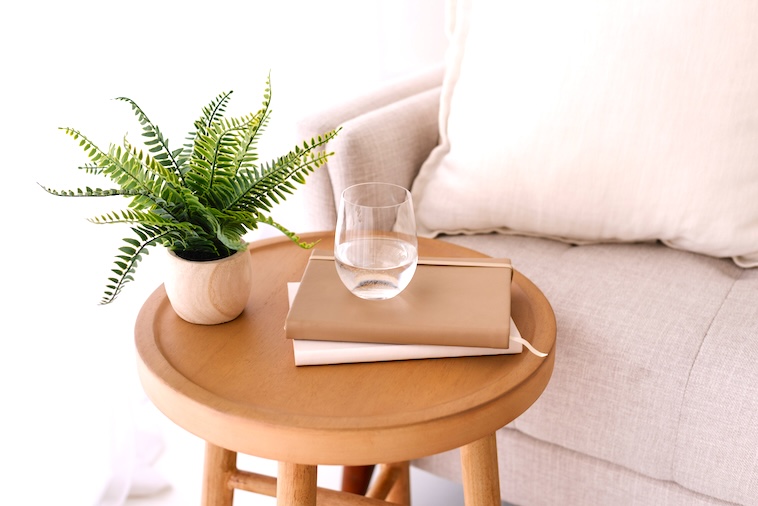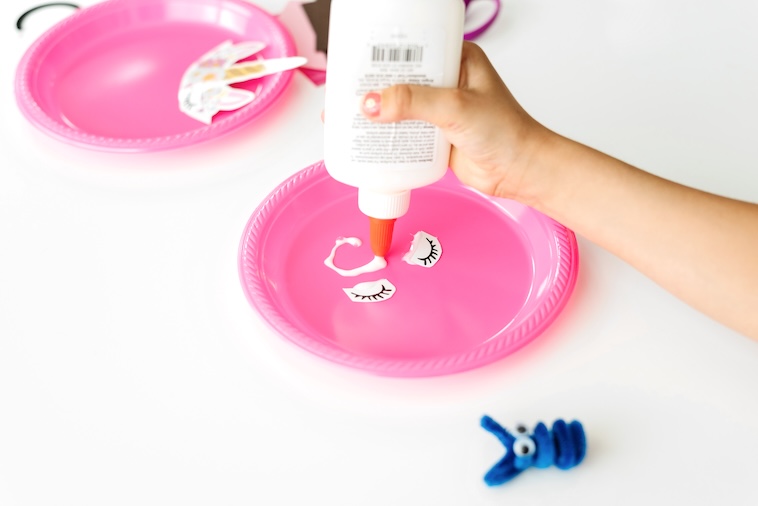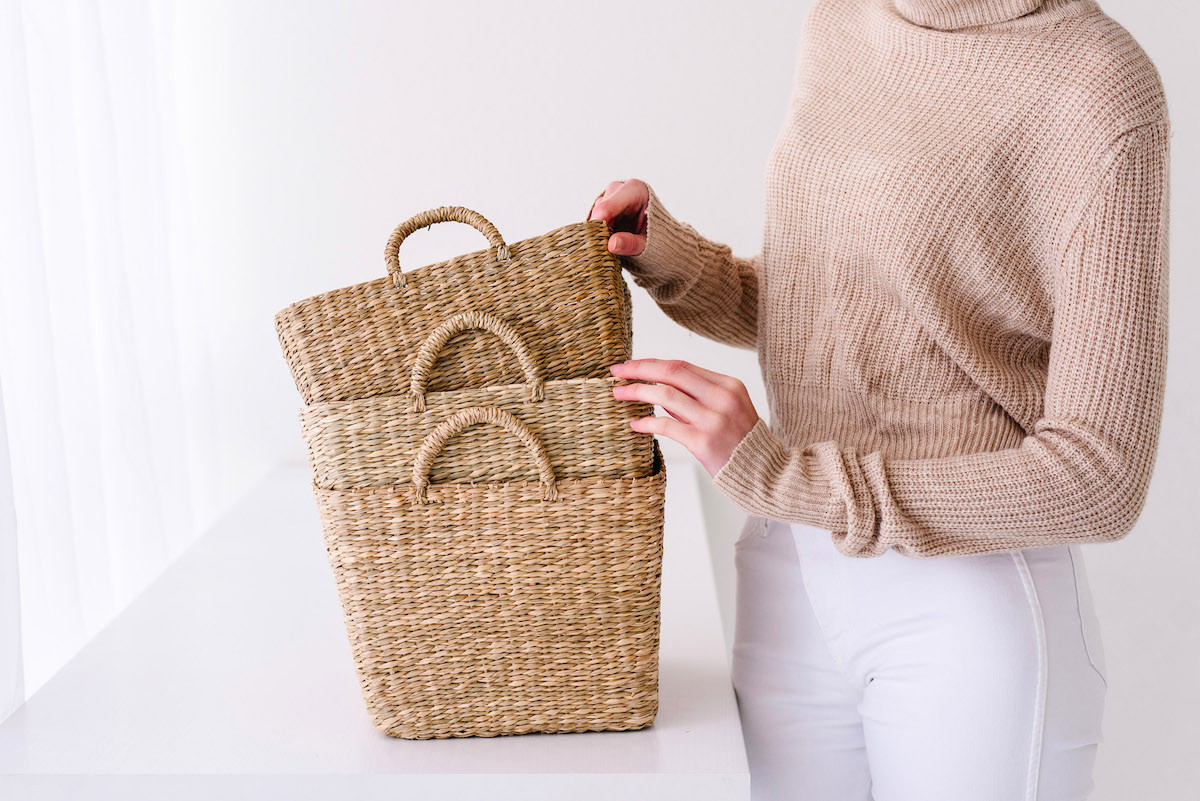How to rotate toys in 7 simple steps
Last Updated on November 25, 2024
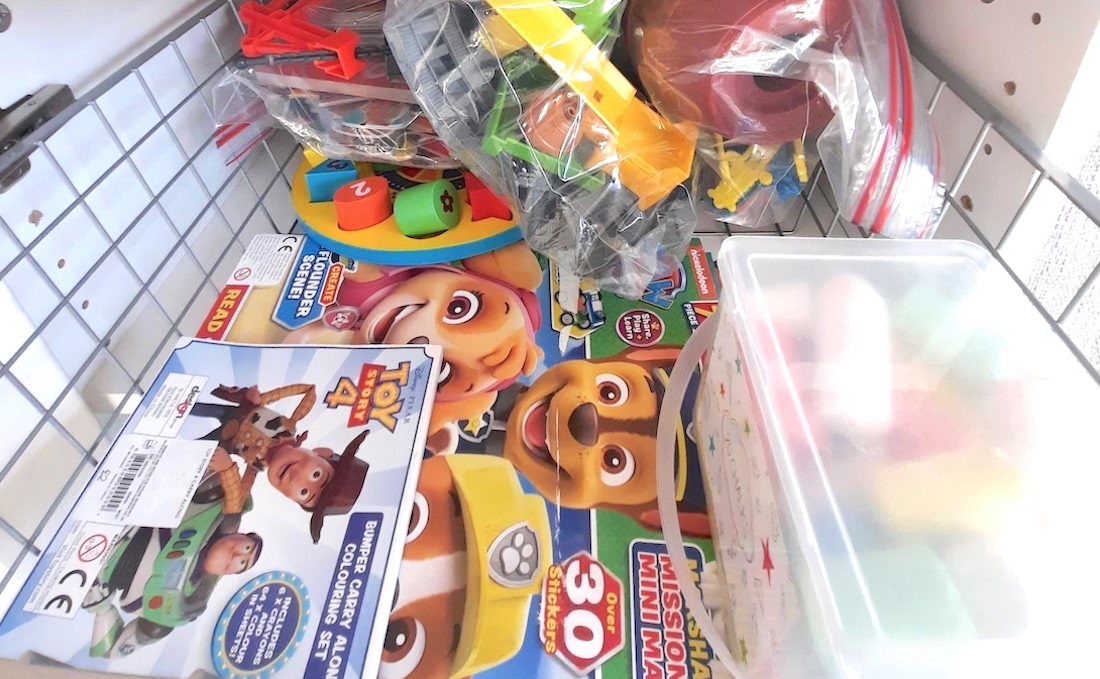
No matter how much toy organisation or decluttering you do, toys just seem to create a lot of clutter, and just when you think you’re in control of them, along comes a birthday or Christmas and new toys take over.
If like me you feel like toys are taking over your home, and you just can’t seem to get on top of the clutter that they create, then it’s time to start rotating your toys.
If rotating your toys is something you’d like to do, but aren’t sure where to start, here are 7 simple steps you can follow to implement a toy rotation system in your own home, so you can finally get on top of your toy clutter.
Bookmark this post for future reference on Pinterest. Thank you!
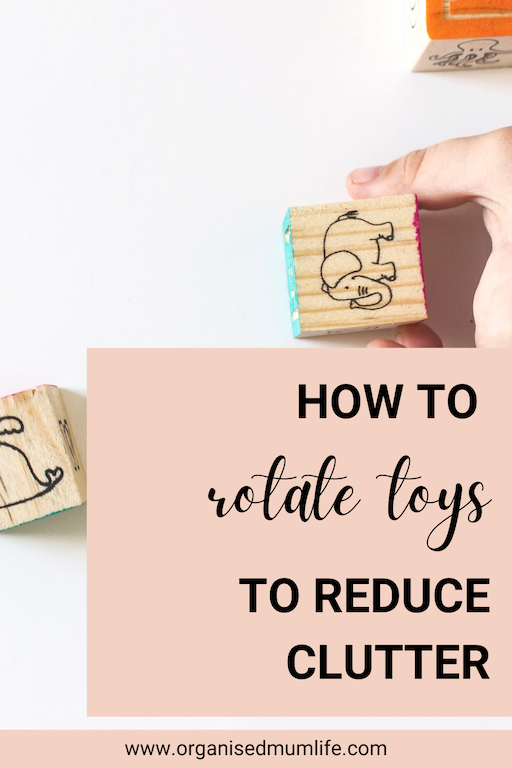
WHAT IS TOY ROTATION?
Toy rotation means dividing all of your children’s toys into small groups, and giving your children one group of toys to play with at a time.
WHAT ARE THE BENEFITS OF TOY ROTATION?
The benefits of rotating your children’s toys include:
- Less clutter
- Faster clean up times due to having less toys to clean up
- All toys get played with and are better appreciated
- Your children think they have new toys to play with whenever stored away toys are bought out, basically because they forgot that they had them
- There’s less toys out for your children to be distracted by, so they become more focused and creative with what they have
- Your children find new ways to play with old toys
HOW TO ROTATE TOYS
Here are 7 steps on how to rotate toys so you can take advantage of the benefits mentioned above, decrease toy clutter in your home, and reclaim some of your living space back.
BRING ALL OF YOUR CHILDREN’S TOYS OUT OF HIDING
The first step in how to rotate toys is to put all of your children’s toys in one place, so you can see how many, and what types of toys your children have.
When doing this, check every toy hiding place so you find every toy in your house, and make sure your children are asleep.
Once you have all of the toys in one place, go through them and donate toys that are too young for your children, and that you don’t want your children to play with anymore, and recycle broken toys as well as toys with missing pieces.
SORT THE TOYS INTO CATEGORIES
Once you’re left with the toys that you want to keep, sort them into categories.
Some examples of categories are:
- Arts and crafts, pencils, colouring books
- Books
- Building toys (blocks, Lego, magnetic tiles etc.)
- Dress ups
- Games
- Puzzles
- Vehicles, and toys that move
- Animals
- Stuffed toys
- Dolls, doll clothing
If you have multiples of the same toy, add some of them to your donation pile.
CREATE ROTATION SETS
The third step in how to rotate toys is to create rotation sets, this means creating piles of toys where one pile is one rotation set, another pile is a second rotation set, and so on.
One rotation set will be the toys that will be in rotation at a particular time, and the remaining sets will be stored away, waiting for their turn to be played with.
When creating a rotation set, all you need to do is take few toys from each category.
When choosing toys for a rotation set, think about the different toys that your children play with together, or what toys from each category go together.
For example, if your children like to colour in pictures of their favourite character, they may want to play with the stuffed toy of that character when they’re finished colouring in, so make sure one rotation set includes different types of their favourite character.
Another example may be that your children like to build super hero vehicles out of Lego, afterwards they may then like to play with their toy cars. If this is the case, make sure you have super hero Lego vehicles as well as toy cars in a rotation set.
Once you’ve worked out all of your rotation sets, store each rotation set in it’s own container or box, preferably not clear, so your children don’t see what’s in them if they happen to find where you’ve stored each set.
There may be some toys that you choose to have out on rotation permanently such as large toys, or toys that your children play with regularly, and that’s okay.
The main aim of toy rotation, aside from decreasing toy clutter, is to get your children to play with their toys, so if there are toys they play with regularly keep them out.
FIND A PLACE TO STORE YOUR ROTATION SETS
Find a place to store each rotation set that your children won’t stumble upon.
For example, a cupboard or drawer that isn’t in your children’s bedroom, under your bed, or outside in the shed or garage.
DISPLAY YOUR IN ROTATION TOYS IN WAYS YOUR CHILDREN WILL PLAY WITH THEM
The age of your children will determine how you display the in rotation toys.
If you have young children, or toddlers, storing toys in rotation in boxes or drawers where they can’t easily see them or access them won’t work, they won’t play with them.
Instead, it may be better to create play areas in your home that they can easily get in and out of, such as reading corners, a home corner, puzzle corners etc.
For older children, you can store toys in drawers or on shelves as they can open drawers to see what they have, and they can reach toys on shelves.
WORK OUT HOW OFTEN YOU’LL ROTATE TOYS
Another step in how to rotate toys is to work out how often you’ll rotate them.
You may decide to rotate toys at specific times such as weekly, monthly, bi monthly or some other time frame.
Or you may decide to rotate your children’s toys when your children get sick of the current toys they’re playing with.
There are no rules around how often to rotate toys. You can be as flexible as you need to be, and can change how often you rotate toys to suit you and your children’s needs.
The best time to put away toys in rotation, and swap them for another rotation set is when your children are in bed, that way they’ll wake up to new toys which is really exciting, instead of being upset by seeing you put their toys away.
ROTATE TOYS AT ANY AGE
There’s no set age on when you can rotate your children’s toys, do it as soon as you want, or as soon as you feel toy clutter creeping in.
My youngest child is nearly 18 months old, and toy rotation is something that I’m about to start. Realistically I could have started ages ago, as he gets bored of his toys very quickly.
I hope you’ve found some great ideas on how to rotate toys that you’d like to try.
Is toy rotation something that you currently do, or would like to do?
Love this post? Share it with others on Pinterest – Thank you!
